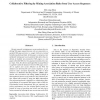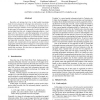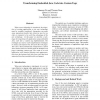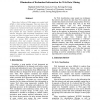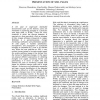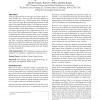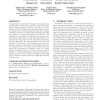WISE
2005
Springer
14 years 5 months ago
2005
Springer
Web sites, Web pages and the data on pages are available only for specific periods of time and are deleted afterwards from a client’s point of view. An important task in order t...
WIRI
2005
IEEE
14 years 5 months ago
2005
IEEE
Recent research in mining user access patterns for predicting Web page requests focuses only on consecutive sequential Web page accesses, i.e., pages which are accessed by followi...
WIRI
2005
IEEE
14 years 5 months ago
2005
IEEE
Recently, web mining that tries to find useful knowledge from the vast amount of web pages has attracted a lot of research interests. Besides, it is becoming an essential task to...
SCAM
2005
IEEE
14 years 5 months ago
2005
IEEE
When a new technology is introduced, the migration of existing applications to the new technology must be carefully considered. Automation can make some migrations feasible that o...
ITCC
2005
IEEE
14 years 5 months ago
2005
IEEE
These days, billions of Web pages are created with HTML or other markup languages. They only have a few uniform structures and contain various authoring styles compared to traditi...
ICDE
2005
IEEE
14 years 5 months ago
2005
IEEE
In the case of large-scale distributed environments such as the Internet, users are interested in monitoring changes to a particular web page (XML or HTML). There are many instanc...
FIRBPERF
2005
IEEE
14 years 5 months ago
2005
IEEE
Web pages are created, modified and removed at unspecified times by their owners. The frequency and extent of changes to Web pages vary across sites and across pages within site...
W4A
2006
ACM
14 years 5 months ago
2006
ACM
Web Content Accessibility guidelines by W3C [29] provide several suggestions for Web designers on how to author Web pages in order to make them accessible to everyone. In this con...
UIST
2006
ACM
14 years 5 months ago
2006
ACM
Existing augmentations of web pages are mostly small cosmetic changes (e.g., removing ads) and minor addition of third-party content (e.g., product prices from competing sites). N...
SIGIR
2006
ACM
14 years 5 months ago
2006
ACM
Content-targeted advertising, the task of automatically associating ads to a Web page, constitutes a key Web monetization strategy nowadays. Further, it introduces new challenging...

